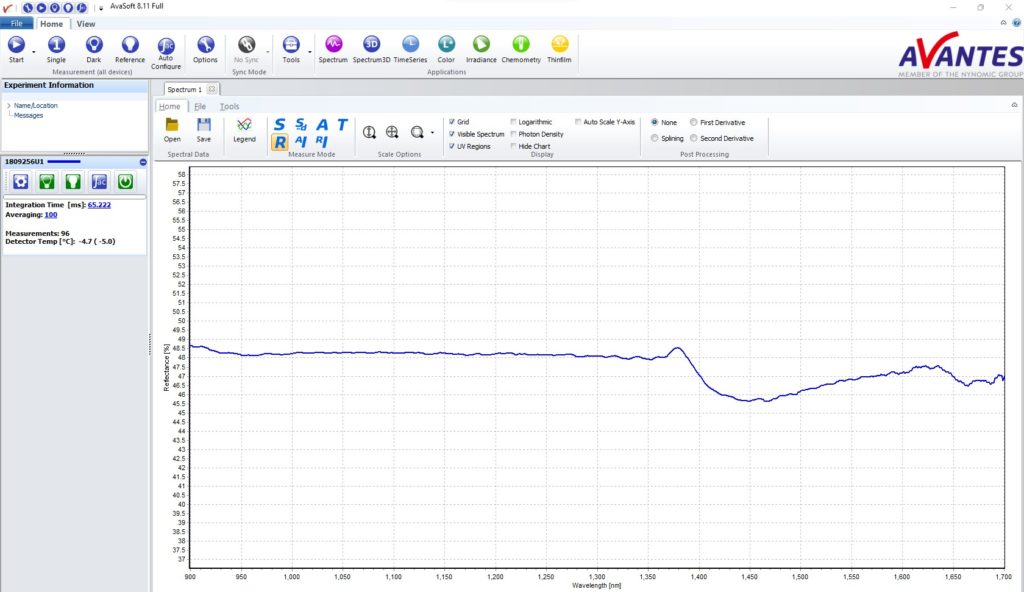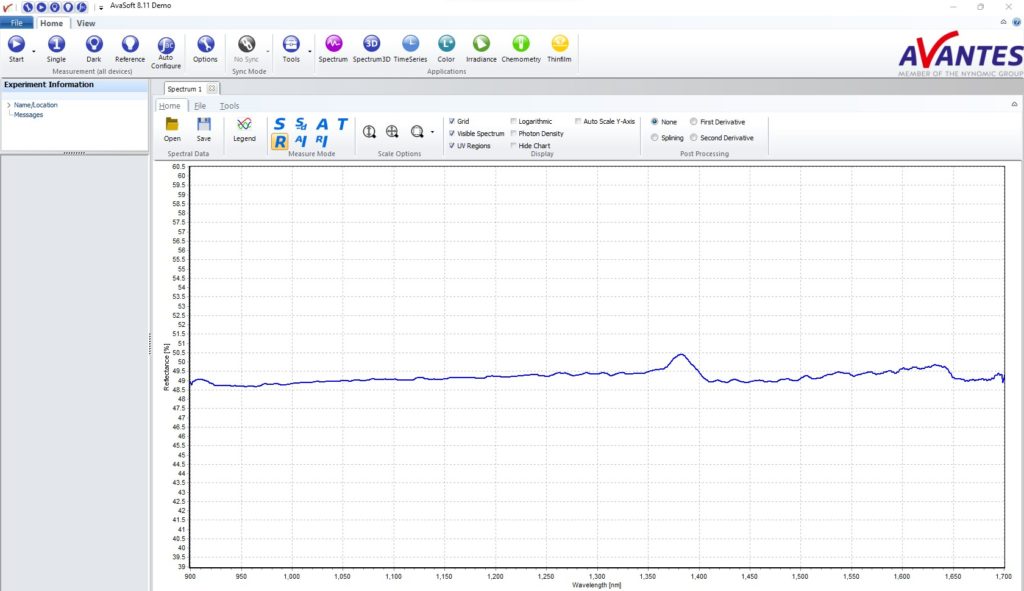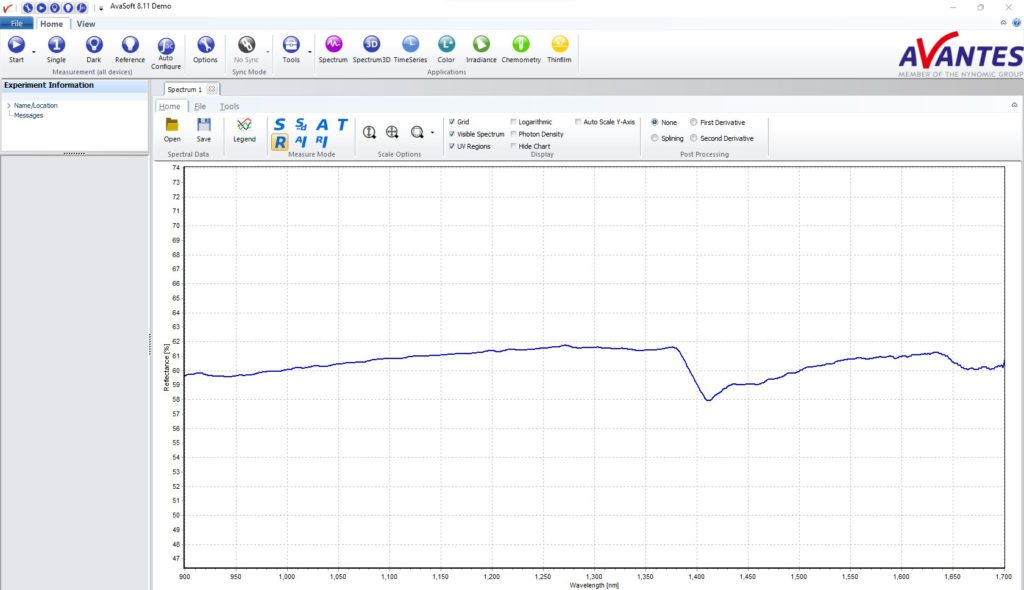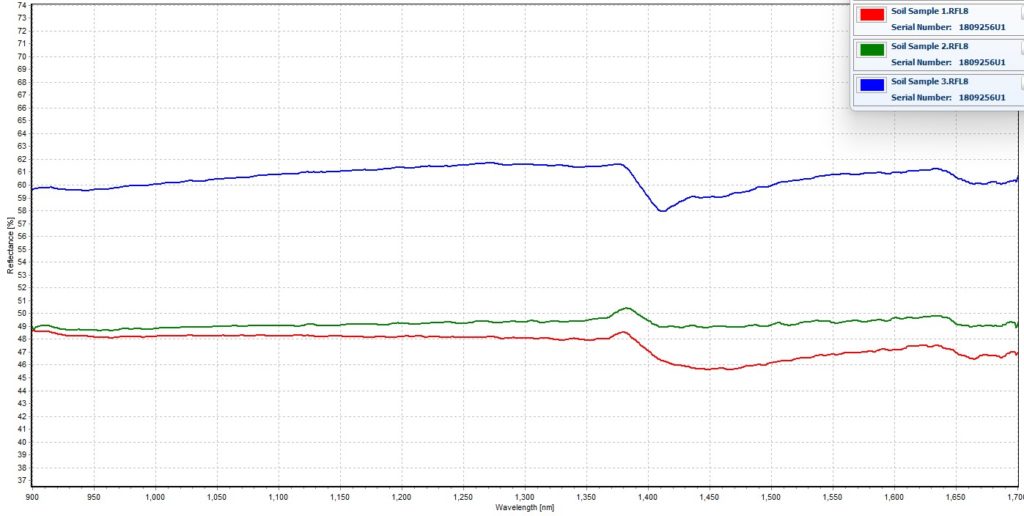Comparing Soil Samples with NIR Spectroscopy
Conducted by: David Ademe (Applications Engineer), Avantes Inc.
Theme: NIR Reflection Spectroscopy
Background/Applications:
Near-infrared (NIR) spectroscopy is a spectroscopic method that uses the near-infrared region of the electromagnetic spectrum (from 780 nm to 2500 nm). Typical applications of NIR spectroscopy include the analysis of pharmaceuticals, materials, pulse oximetry, and food products. Along with food products, NIR spectroscopy is commonly used in the agriculture industry to determine the quality of crops. It is widely used to quantify the composition of agricultural products because it meets the criteria of being accurate, reliable, rapid, non-destructive, and inexpensive compared to other techniques. NIR spectroscopy can also be used to identify the compositions of soil; some examples include:
- Nitrogen content; which is used to grow plants. Nitrogen can commonly be found in soil fertilizer.
- Moisture content of the sample.
- Organic matter content; which will vary depending on the location and crops being grown.
For this experiment, NIR reflection spectroscopy was used to collect the spectra of several different soil samples, demonstrating the variability in soil composition.

Figure 1: The setup of the experiment
Description of System:
An AvaSpec-NIR512-1.7-HSC-EVO was used in this experiment. The AvaSpec-NIR256/512-1.7-HSC-EVO spectrometers pair the same trusted InGaAs array detectors with our ultra-low-noise electronics board, featuring a USB3 and Giga-Ethernet connection port. The instruments are equipped with a Replaceable Slit. Digital and analog I/O ports enable external triggering and control over the shutter and pulsed light sources. Choose from two distinct software-controlled gain-setting modes: high-sensitivity mode (HS, default) and low-noise mode (LN). Cooling ensures optimum noise conditions, even at longer integration times. All NIR-1.7 instruments are available with a choice of four different gratings, making it possible to choose the bandwidth fitting your application.
The light source used for this testing was the AvaLight-HAL-S-Mini. The AvaLight-HAL-S-Mini is well suited for measurements in the visible spectrum all the way out to the NIR spectrum. It is a compact, stabilized halogen light source with adjustable focusing of the fiber connection, maximizing output power at the desired wavelength. This versatile light source also has adjustable output power to provide extra power or longer bulb life.
Both the light source and spectrometer have been coupled together with a reflection probe, which was fixed in place on the transmission/reflection (TR) stage, developed by Avantes Inc. Fixed at the end of the reflection probe is a collimating lens. This allows light to be sampled across a greater surface area of the soil, ensuring a homogeneous spectrum was collected, as there are varying compositions across the soil samples.
Description of Methodology:
For this experiment, the reflection probe was fixed to the TR stage. A white WS-2 tile was used as the reference material for all three soil samples. The averaging was set to 500 as the sample was slowly rotated around underneath the probe. This was done to ensure a uniform average for the soil sample was collected. All three spectra were collected in the reflection mode of AvaSoft.
Below is the legend for the three samples tested:
- Soil Sample 1: Collected from behind Avantes Inc after a light rainstorm.
- Soil Sample 2: Same as soil sample 1, however it was tested exactly 24 hours after soil sample 1 was collected.
- Soil Sample 3: Collected from the entrance of a prairie dog hole, under dry weather conditions.
Test Data and Results:
The following images show the reflection spectra of the three soil samples that were tested.
Analysis:
Each of the three samples tells us something unique about the composition of the soil. Comparing the three samples, as shown in figure 5, we can tell that each soil sample displays a different reflection spectrum.
Samples 1 and 2 appear very similar to one another. This is to be expected, as they are the same sample, just with different moisture contents. Sample 2, which was allowed to dry for 24 hours, is more reflective than sample 1, which was collected after a rainstorm. Sample 3 was collected from a dry prairie dog hole and is much more reflective than samples 1 and 2. This can allow us to infer that the dryer the soil, the more reflective it is.
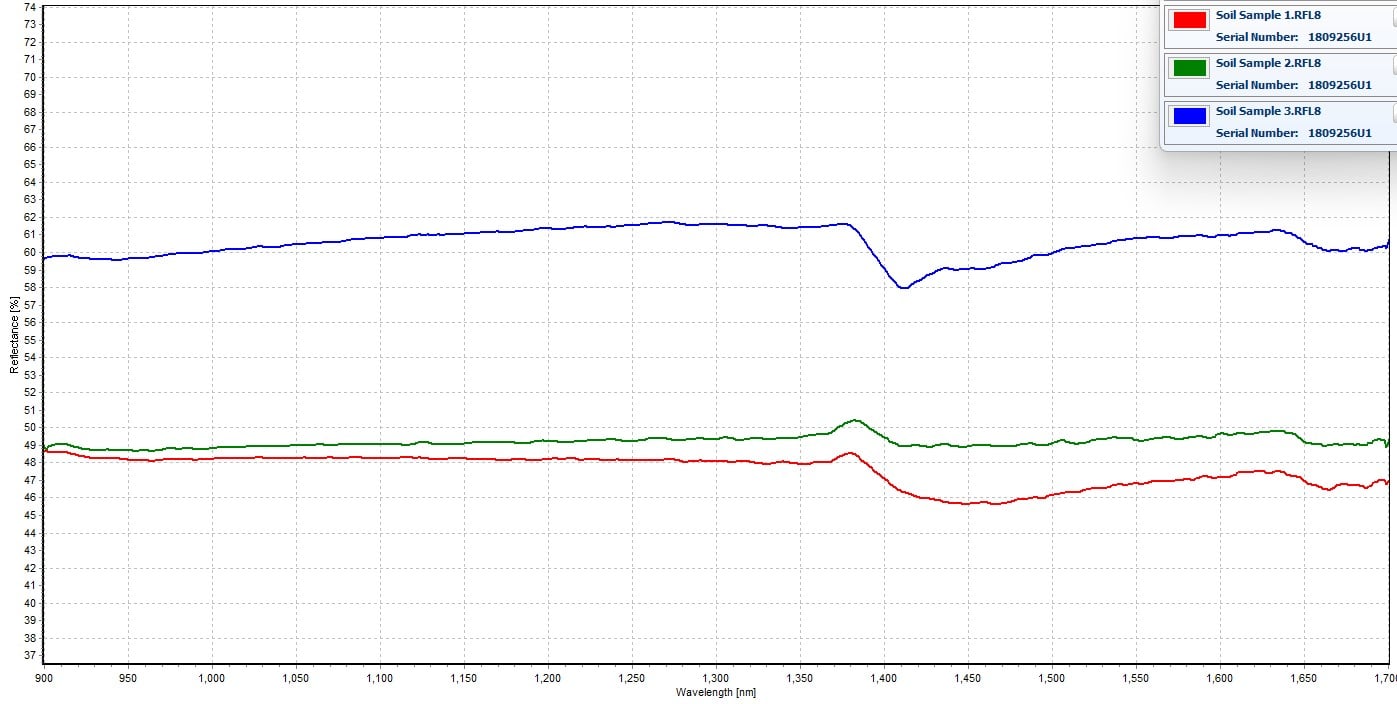
Figure 6: The reflectance spectrum of soils with different moisture contents, showing that the lower the moisture, the greater the reflectance
Another feature that all three spectra have in common is the valley at 1380 nm. This is a characteristic of water, which is very absorptive at this wavelength.
Further testing could allow the tester the ability to create a chemometric model that would predict the content of water present in the soil sample. Also using the AvaSpec-NIR512-2.5-HSC-EVO would allow us to detect different quartz and mineral presence within the samples.
Conclusion:
The AvaSpec-NIR512-1.7-HSC-EVO is an excellent solution for material analysis, including soil analysis and material evaluation. For more portable applications, the AvaSpec-Mini-NIR, can facilitate field soil analysis when combined with Avantes Avalight-Hal-S-Mini tungsten halogen light source or solar illumination and a fiber-optic reflection probe (FCR-7UVIR400-2-ME). Avantes spectrometers such as this can be configured for a wide range of industries and applications to provide precise and accurate data. If you would like to demo the setup or have your samples tested to see how the setup can benefit your applications, please contact your Avantes representative.
 My Cart
My Cart 
